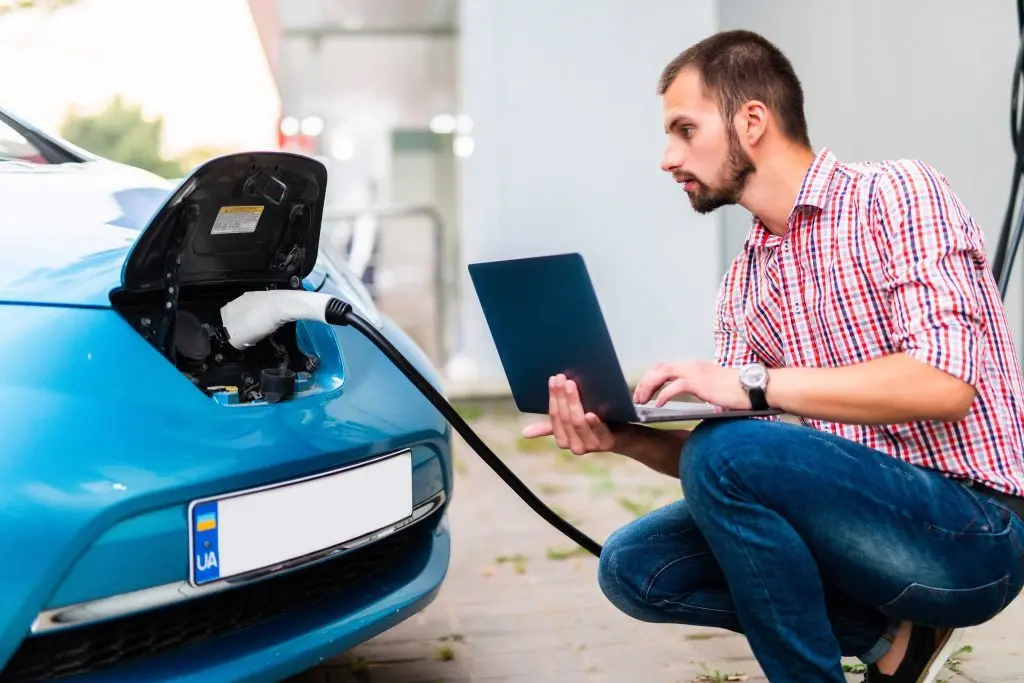Servicing & maintaining EV's
The overall simplicity of pure electric vehicles could result in users saving time and money on servicing.

What maintenance does an electric vehicle require?
Like any combustion engine car, electric vehicles require a M.O.T inspection every three years, although, will be exempt from emission testing.
As there’s no combustion taking place, purely electric vehicles don’t require an exhaust system and therefore, aren’t releasing any harmful gasses.
Servicing is still essential at the necessary intervals, although, with less parts and a more simplistic vehicle, your repair bills could be much less than standard.
An electric vehicle uses a battery and an electric motor; whereas a combustion engine requires lubricants such as oil. To put it simply, EVs have much less parts to inspect, which minimalizes the number of items that need to be fixed or replaced!
Electric Vehicles don’t require any of the following;
- Engine Oil Changes
- Cooling Systems
- Pistons
- Fuel Pump
- Spark Plugs
- Timing belts
- Air Filters
What is done during an electric vehicle servicing?
Your service requirements will depend on a number of factors and should your vehicle require maintenance; we advise that you contact your vehicle manufacturer to arrange your next service.
As with any vehicle, there is parts which we use and must maintain, due to deterioration from daily usage. Such as tyres, windscreen washer, brake pads and fluids.
Electric vehicles are equipped with regenerative braking which uses the electric motor to slow the vehicle down, whilst acting as a generator, converting as much electricity as possible back into the vehicle’s battery.
Typically, your full service will inspect;
- Tyres – Condition, pressure and thread depth
- Lights – Functionality and visibility
- Fluids – Check fluid and lubrications; such as gearbox and differential oil, brake fluid and antifreeze
- Suspension – Checking the bushes, springs and shock absorbers for deterioration
- Steering – Ensuring wheels are aligned and steering functions smoothly
- Cooling – Ensure that cooling fans and fluids are operational
- Battery – Check the power storage and output
How do I maintain the battery?
It’s advisable to unplug your vehicle once the battery has reached maximum capacity and to avoid overcharging the battery. Many manufacturers now use a built-in battery management system, preventing the battery from overheating due to excessive charging. You can check your vehicle handbook to see if your EV utilises a battery management system, or call your manufacturer if you still aren’t sure.
Growing innovation has reduced consumer concerns regarding vehicle range, although, many are unsure about battery life or maintenance.
Manufacturers such as Tesla offer a 7 year, or 100,000-mile warranty on their vehicle batteries, to help ease consumer concerns. Improved technology has enhanced battery durability, with many users reporting to still have 90% capacity after 100,000-miles.
WE'LL FIND THE BEST DEALS FOR YOU!
Our base rental pricing means you save every month. No additional monthly charge and no hidden extras.
ASK THE EXPERTS
Get in touch with our team of experts today.
0161 928 3456 (UK NORTH) 0203 096 3705 (UK SOUTH) 0289 018 3336 (N. IRELAND)

